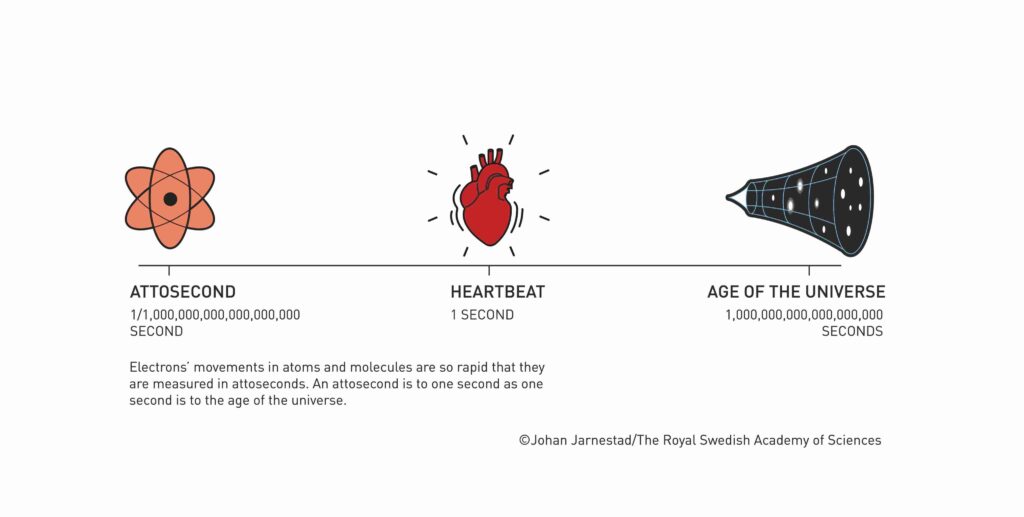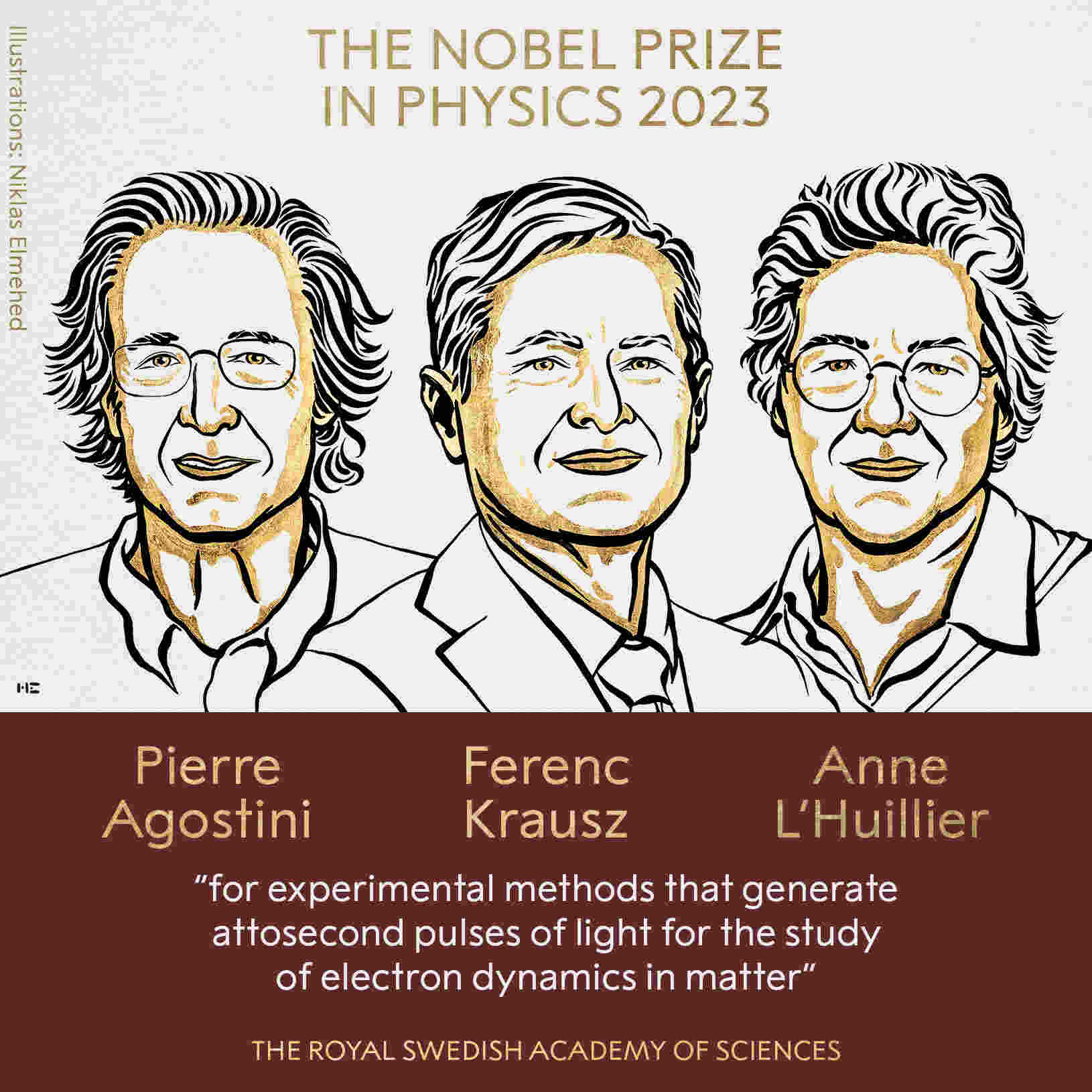In the realm of physics, where the universe’s most enigmatic events unfold, three exceptional scientists have earned the Nobel Prize in Physics for 2023. Pierre Agostini of The Ohio State University, Ferenc Krausz of the Max Planck Institute of Quantum Optics, and Anne L’Huillier of Lund University, Sweden, are being honored for their groundbreaking experiments in generating attosecond pulses of light. These pulses, measured in quintillionths of a second, have unveiled the intricacies of electron dynamics within atoms and molecules, offering humanity an unprecedented view into the world of the tiniest particles.
Exploring the Inconceivably Swift
In the realm of electrons, changes transpire at astonishing speeds, often measured in attoseconds. To put this into perspective, one attosecond is so short that there are as many attoseconds in a second as there have been seconds since the birth of the universe. Traditional methods fall short when investigating such rapid events, necessitating ingenious technology.
Anne L’Huillier’s Pioneering Discovery
Anne L’Huillier’s journey into this groundbreaking field commenced in 1987 when she observed myriad overtones of light while transmitting infrared laser light through a noble gas. Each overtone represented a distinct light wave with a specific number of cycles, an outcome of laser light’s interaction with gas atoms. This process imbued some electrons with extra energy, subsequently emitted as light. L’Huillier’s pioneering work laid the foundation for further breakthroughs.
Pierre Agostini’s Attosecond Mastery
In 2001, Pierre Agostini achieved a significant milestone by generating consecutive light pulses, with each lasting an astonishingly brief 250 attoseconds. His work contributed immensely to the understanding of ultra-fast processes. Simultaneously, Ferenc Krausz embarked on a different experiment, isolating a single light pulse lasting 650 attoseconds. These remarkable achievements enabled scientists to investigate events so fleeting that they were once deemed beyond comprehension.

Unveiling Electron Mechanisms
Attosecond physics has flung open the doors to the electron’s enigmatic world. It offers a unique opportunity to fathom the mechanisms governed by these subatomic particles. As Eva Olsson, Chair of the Nobel Committee for Physics, underscores, “We can now open the door to the world of electrons. Attosecond physics gives us the opportunity to understand mechanisms that are governed by electrons. The next step will be utilizing them.”
Also read: Nobel prize 2023 in medicine
Potential Applications Beyond Imagination
The implications of this groundbreaking research extend far and wide. In the realm of electronics, it is vital to comprehend and manipulate electron behavior within materials. Attosecond pulses also hold promise in identifying various molecules, revolutionizing fields like medical diagnostics.
Conclusion
The 2023 Nobel Prize in Physics celebrates the remarkable achievements of Pierre Agostini, Ferenc Krausz, and Anne L’Huillier, whose pioneering experiments have unveiled the minuscule yet magnificent world of attoseconds. Their contributions have not only expanded our understanding of electron dynamics but also opened doors to countless applications across diverse scientific domains.
What are attosecond pulses, and why are they important in physics?
Attosecond pulses are ultra-short bursts of light lasting quintillionths of a second. They are crucial in physics because they enable scientists to observe and study extremely rapid processes, such as electron dynamics within atoms and molecules.
What practical applications can arise from attosecond physics?
Attosecond physics has potential applications in various fields, including electronics for better understanding and control of electron behavior in materials and medical diagnostics for identifying molecules.
How did Anne L’Huillier’s discovery contribute to attosecond physics?
Anne L’Huillier’s discovery of overtones of light when transmitting laser light through a noble gas laid the foundation for attosecond physics by demonstrating the generation of extremely short light pulses, a crucial tool in this field.
What makes attosecond physics a groundbreaking field of study?
Attosecond physics allows scientists to explore and understand processes that occur at unprecedented speeds, such as electron movements and energy changes, providing insights into the fundamental building blocks of the universe.


1 thought on “Nobel prize 2023 in physics”